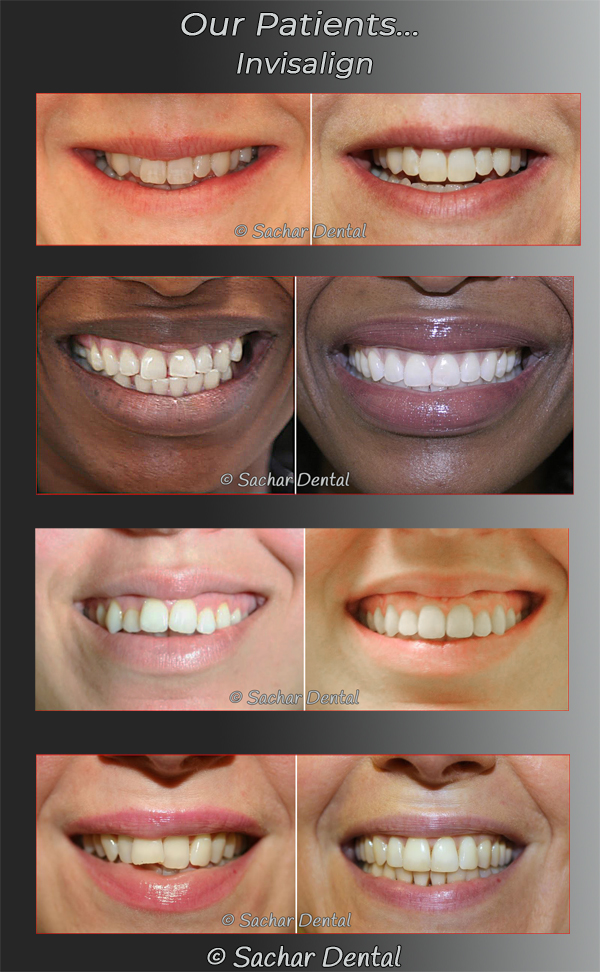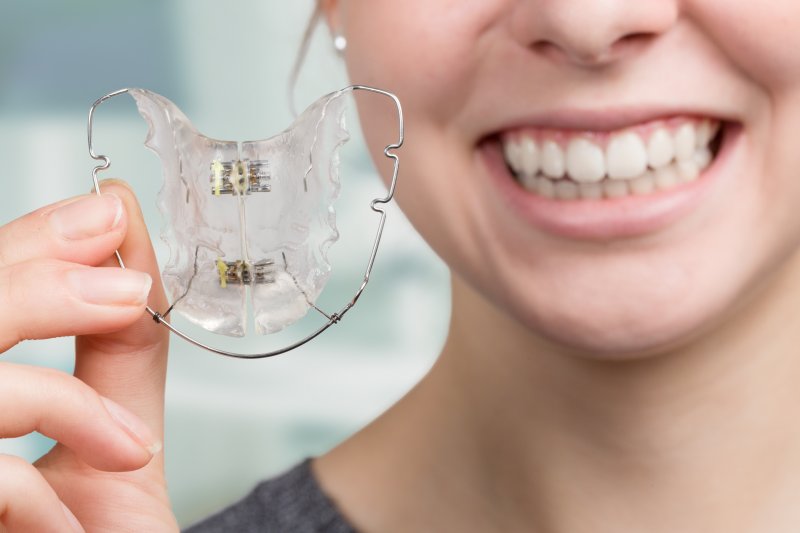Invisalign for Teens: A Modern Solution to Straightening Young Smiles
Invisalign for Teens: A Modern Solution to Straightening Young Smiles
Blog Article
Invisalign vs. Traditional Dental braces: Which Alternative Is Right for You?
When taking into consideration orthodontic therapy, the choice in between Invisalign and conventional braces presents several essential variables that merit cautious evaluation. Invisalign provides a discreet option with detachable aligners, while standard braces provide a much more noticeable yet reliable service for extreme misalignment. Each choice includes unique advantages and disadvantages associated to visual appeals, comfort, treatment duration, and cost. Understanding these nuances is crucial for making an educated decision that lines up with your personal preferences and way of life. The concern remains: which option will best meet your orthodontic needs and expectations?
Overview of Therapy Choices
In contrast, typical dental braces include metal brackets and cords that are adhered to the teeth. This technique applies constant pressure with time to accomplish placement. While efficient for intricate orthodontic problems, standard braces need routine sees for changes and can present difficulties in preserving oral hygiene due to the difficulty of cleaning up about wires and brackets.
Both alternatives have their advantages, and the choice usually depends upon specific oral problems, way of life choices, and client compliance. Ultimately, getting in touch with an orthodontic expert is vital for identifying the most appropriate treatment plan customized to private needs. Understanding the subtleties of each alternative can substantially influence the general success of orthodontic therapy.
Aesthetic Considerations
A considerable element influencing the selection in between Invisalign and typical braces is the visual charm each therapy supplies. Invisalign aligners are crafted from clear plastic, making them virtually invisible when worn. This discreet look is specifically appealing to adults and young adults that may really feel awkward concerning their orthodontic treatment. The capacity to preserve an all-natural smile throughout the alignment process can dramatically boost the individual's confidence in social and professional settings.
On the other hand, typical braces are composed of metal brackets and wires, which can be extra noticeable. While improvements in orthodontic modern technology have actually led to the development of smaller braces and colored elastics, conventional braces still maintain an even more obvious account. For some people, the visibility of dental braces may hinder them from seeking needed treatment.
Ultimately, the option in between Invisalign and standard dental braces may depend upon personal preferences relating to aesthetic appeals. Patients that prioritize discernment typically favor Invisalign, while those who are much less concerned about presence may choose for traditional dental braces. Recognizing the visual implications of each option is important for making an informed choice that straightens with one's lifestyle and look at this now choices.
Comfort and Convenience

In regards to comfort, Invisalign aligners are detachable, allowing patients to enjoy their favorite foods without restriction and maintain ideal dental health. Cleaning and flossing are simplified, as the aligners can be obtained throughout these routines, whereas typical braces require mindful navigating around brackets and cables.
In comparison, standard dental braces demand routine adjustments, making them less hassle-free for those with hectic timetables. In general, the comfort and benefit of Invisalign make it an enticing option for several individuals seeking orthodontic treatment.
Treatment Period and Performance
While both Invisalign useful source and typical dental braces are efficient in dealing with oral misalignments, the duration of therapy can vary substantially between the two alternatives. Generally, Invisalign treatment can take anywhere from 12 to 18 months, relying on the complexity of the case. The clear aligners function by slowly changing teeth right into their wanted placements, and normal follow-ups with an orthodontist aid make certain development continues to be on the right track.
In contrast, conventional braces typically call for a longer commitment, typically varying from 18 months to three years. This is due to their set nature and the use of brackets and wires, which can be extra reliable for extreme imbalances and complex cases (Invisalign). The treatment effectiveness of find more typical braces is well-documented, as they permit accurate adjustments and greater control over tooth activity
Eventually, the selection in between Invisalign and conventional dental braces might rest on both the anticipated therapy duration and the specific dental concerns handy. Consulting with an orthodontist is essential, as they can offer customized referrals based on individual needs, ensuring the picked technique aligns with preferred durations and results.
Price Comparison and Insurance Policy Choices
Cost plays a considerable role in the decision-making process for people taking into consideration orthodontic treatment, whether going with Invisalign or traditional braces. On standard, the cost of Invisalign ranges from $3,000 to $8,000, while traditional dental braces usually set you back between $2,000 and $6,000. Variables influencing these prices consist of the intricacy of the instance, the period of treatment, and geographical area.
Insurance coverage can substantially influence out-of-pocket costs. Several dental insurance strategies offer partial protection for orthodontic treatments, but the specifics can vary widely. It is critical for people to review their insurance coverage to identify the degree of insurance coverage for either option. Usually, conventional dental braces may be a lot more regularly covered by insurance coverage strategies contrasted to Invisalign, which some insurance companies categorize as a cosmetic procedure.
Furthermore, several orthodontic practices provide adaptable payment strategies, making both therapy choices a lot more accessible. Patients should make inquiries concerning possible funding choices and discounts for ahead of time payments. Evaluating the complete price, consisting of insurance coverage benefits and layaway plan, is important for making an informed decision that aligns with both aesthetic preferences and budget plan considerations.

Final Thought
In recap, the selection in between Invisalign and standard dental braces depends upon numerous aspects, including visual preferences, convenience, treatment period, and expense. Invisalign supplies a discreet, detachable choice that helps with dental hygiene and dietary flexibility, while standard dental braces might be extra suitable for complex oral problems and typically come at a lower price factor. Ultimately, assessment with an orthodontist is important to examine individual scenarios and establish the most suitable treatment alternative for attaining ideal dental positioning.
When considering orthodontic therapy, the selection in between Invisalign and standard braces presents a number of important elements that warrant mindful evaluation.Comparing Invisalign and conventional braces discloses distinctive therapy options for orthodontic adjustment.While both Invisalign and conventional braces are reliable in correcting dental imbalances, the period of treatment can differ dramatically in between the 2 options.Price plays a considerable function in the decision-making procedure for individuals thinking about orthodontic treatment, whether deciding for Invisalign or conventional dental braces.In recap, the option in between Invisalign and traditional braces pivots on multiple variables, including aesthetic choices, comfort, therapy duration, and expense.
Report this page